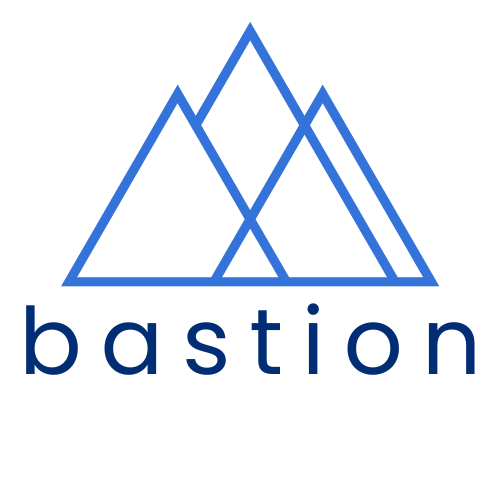Defining Required Behavioral Changes

Competency: Identify and specify the changes required in audience attitudes and behaviors to inform the development of achievable and policy-aligned initiatives
Understanding Behavioral Change Requirements
Most diplomatic initiatives ultimately aim to change how people think, feel, or act. Whether you're building support for a trade agreement, encouraging adoption of new security protocols, or fostering international cooperation, success depends on specific stakeholders doing something different than they're currently doing. Defining these required changes precisely is essential for designing effective interventions.
Behavioral change analysis moves beyond hoping that "awareness will lead to action." Instead, it systematically identifies what specific attitudes and behaviors need to shift, who needs to change them, and what factors currently prevent or enable those changes. This analysis becomes the foundation for designing realistic, targeted initiatives rather than generic communication campaigns.
The Attitude-Behavior Connection
Attitudes and behaviors are related but distinct, and changes in one don't automatically produce changes in the other. People may support a policy in principle (attitude) but fail to advocate for it publicly (behavior) due to social pressure or institutional constraints. Conversely, people may comply with new regulations (behavior) while remaining skeptical about their necessity (attitude).
Attitude Changes might include: shifting from opposition to support, moving from apathy to concern, changing priority rankings among competing issues, or developing trust in new institutions or processes.
Behavior Changes might include: voting for supportive candidates, participating in new programs, changing business practices, joining advocacy coalitions, or modifying resource allocation decisions.
Specifying Change Requirements
Effective behavioral change analysis requires specific, observable descriptions rather than vague aspirations. Instead of "increase support for climate action," specify "environmental NGOs publicly endorse the carbon pricing mechanism and include it in their advocacy priorities." Instead of "improve business community engagement," specify "manufacturing association leaders attend planning meetings and provide specific input on implementation timelines."
The key insight: if you can't describe the change you need in concrete, observable terms, you can't design effective interventions to achieve it. Vague goals produce vague strategies and unclear success measures.
Example in Practice
Consider an initiative to strengthen cybersecurity cooperation. Your behavioral change analysis might identify several required shifts:
Government cybersecurity agencies need to move from information hoarding to active intelligence sharing (behavior change driven by trust and reciprocity concerns). Private sector companies need to shift from viewing security as a competitive advantage to seeing it as a collective responsibility (attitude change requiring new mental models about shared risk). Academic institutions need to begin including policy-relevant research in their cybersecurity programs (behavior change requiring incentive alignment).
Each of these changes faces different barriers and requires different intervention approaches. Government agencies might need legal frameworks and formal agreements, while private sector attitude shifts might require demonstration projects and peer influence campaigns.
Practitioner Diagnostic Tools
When behavioral change requirements become complex—involving multiple interconnected changes, conflicting stakeholder motivations, or unclear causal relationships—use these frameworks to maintain analytical rigor.
Change Requirements Assessment Checklist
Specificity Evaluation:
□ Can you describe exactly what different behaviors would look like?
□ Are your attitude change goals observable and measurable?
□ Have you identified specific individuals or organizations that need to change, not just general categories?
□ Can you distinguish between changes that are necessary versus those that would be helpful?
□ Are your change requirements realistic given current stakeholder positions and constraints?
Barrier Analysis:
□ What currently prevents each stakeholder from making the required changes?
□ Are barriers primarily informational (lack of awareness), motivational (misaligned incentives), or structural (institutional constraints)?
□ Which barriers are within stakeholder control versus external constraints?
□ How do different barriers interact with each other?
□ What would need to change in the broader environment to enable stakeholder behavioral shifts?
Sequencing Assessment:
□ Which changes need to happen first to enable other changes?
□ Are there stakeholder changes that would have multiplier effects on others?
□ Can you identify quick wins that build momentum toward larger changes?
□ Which changes are likely to face the most resistance and require sustained effort?
□ How might early changes affect stakeholder willingness to make subsequent changes?
Advanced Change Analysis Strategies
Theory of Change Development: Map the logical connections between your activities, stakeholder changes, and ultimate policy outcomes. This reveals assumptions and helps identify intervention points.
Behavioral Economics Integration: Consider how cognitive biases, social norms, and decision-making shortcuts affect stakeholder willingness and ability to change.
Social Network Effects: Understand how changes by influential stakeholders might cascade through networks to affect broader populations.
Institutional Analysis: Examine how formal and informal rules, incentive structures, and organizational cultures support or impede required changes.
Change Categories Framework
Knowledge Changes: New information or understanding that affects how stakeholders view issues or options.
Skill Changes: New capabilities that enable stakeholders to act differently than before.
Motivation Changes: Shifts in priorities, incentives, or emotional engagement that affect willingness to act.
Opportunity Changes: New resources, authorities, or circumstances that make different behaviors possible.
Social Norm Changes: Shifts in what stakeholders perceive as acceptable, expected, or prestigious behavior.
Getting Unstuck: Common Scenarios
"We need everyone to support our policy": This is usually unrealistic and unfocused. Identify the minimum set of stakeholders whose behavior changes would be sufficient to achieve your objectives.
"Stakeholders say they support the idea but won't commit to action": Look for misalignment between public positions and private interests, or structural barriers that prevent action despite supportive attitudes.
"The changes we need seem impossible given current stakeholder positions": Consider intermediate changes that move stakeholders toward your ultimate requirements, or environmental changes that might shift stakeholder calculations.
"Different stakeholders need contradictory changes": This often signals a need to reconsider your policy approach or find creative solutions that address seemingly competing requirements through different mechanisms.
Cross-References: This competency builds on Competency Six (strategic listening), Competency Seven (stakeholder mapping), and Competency Two (local context analysis), while directly informing Competency Fourteen (SMART objectives), Competency Fifteen (logic models), and Competency Sixteen (content design).
